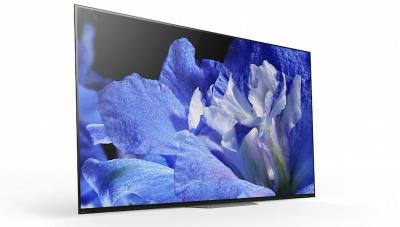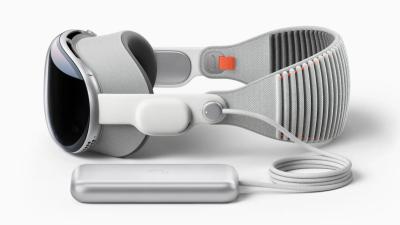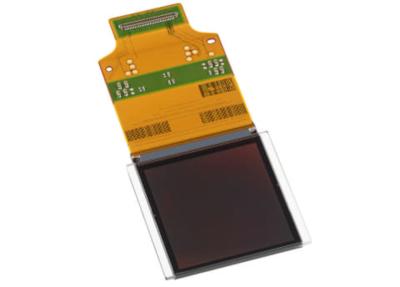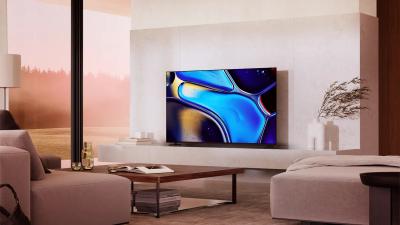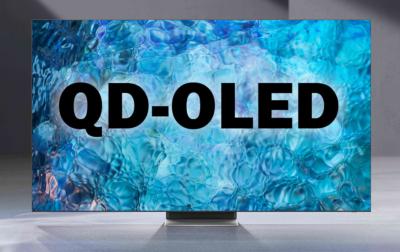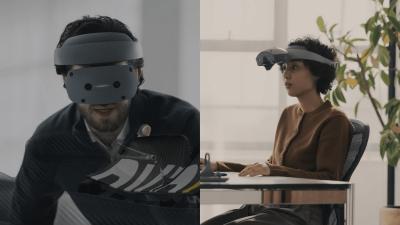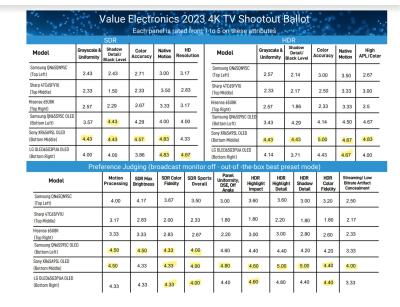 Sony is one of the leading consumer electronics companies in the world. Sony has been developing OLED technologies for many years and has been one of the pioneers in the field.
Sony is one of the leading consumer electronics companies in the world. Sony has been developing OLED technologies for many years and has been one of the pioneers in the field.
Sony has an extensive OLED history and research project, and is both an OLED producer and an OLED panel customer for its TVs and other products (VR headsets, for example). Sony used to adopt OLEDs in its MP3 players, mobile gaming consoles and more.
The company operates its own low-volume AMOLED production line, and in 2007 launched the world's first OLED TV (a 11" monitor a TV, the XEL-1) which was discontinued shortly after. Sony's production line is currently used to produce high-end OLED broadcasting monitor panels.. The company no longer produces consumer AMOLED displays, though. Sony also has an OLED microdisplays production line, and is the supplier for Apple's Vision Pro headset among many other products.
Sony is also producing TVs based on OLED panels, supplied by both LGD (WOLED) and Samsung Display (QD-OLED).
1-7-1 Konan
Minato-ku
Tokyo
108-0075
Japan
Apple reportedly reaches out to Samsung and LG regarding the supply of OLED microdisplays
According to a report from Korea, Apple has sent an RFI for both Samsung Display and LG Display, seeking more information about the two companies capabilities regarding the production of OLED microdisplays. It is speculated that Apple is seeking to change its OLED supplier in a future, lower-cost VR headset.
Apple specifically mentions a white OLED with color filters architectures (i.e. not a direct-patterned device), a panel size of 2 to 2.1 inch and a display density of around 1,700 PPI (which is rather low, Sony's 4K microdisplays used in the Apple Vision Pro for example offer a density of almost 3,400 PPI).
Demand for Apple's Vision Pro is lower than expected, cuts its 2024 production plans by 50%
In February 2024, Apple started to ship its VR headset, the Apple Vision Pro, with its two Sony 1.3" 4K OLED microdisplays. According to Ming-Chi Kuo, a respected Apple analyst, the market reaction to Apple's HMD was much lower than expected, and Apple decided to slash its production plan from 800,000 units in 2024 to about 400,000.
The Vision Pro has been shipping in the US only, but it seems the company prefers to cut production rather than start to ship the headsets globally - a sign that it does not expect demand to be higher outside of the US. According to Kuo, Apple is likely to cancel its plan to release a new version in 2025.
Samsung said to adopt Sony OLED microdisplays in its upcoming VR headset
Samsung Electronics is developing a new high-end VR headset, likely aiming to release it by the end of 2024. According to reports, Samsung will integrate OLED microdisplays produced by Sony, similar 1.4" 4K displays that are used by Apple in its Vision Pro headset.
Samsung Display is developing its own OLED microdisplays, and the company is looking to bring such displays to market soon - in fact initial production will begin by the end of 2024, and full mass production will be achieved in 2026. It is not clear whether this new Sony design win means that Samsung Electronics prefers the Sony displays over SDC's, or whether it's simply a matter of Samsung Display not ready in time for mass production.
Sony launches its 2024 TV lineup, with a mid-range OLED TV and a top-tier MiniLED backlit QLED
Sony announced its 2024 TV lineup, and interestingly, the top model (the Bravia 9) is a Mini-LED backlit QLED TV. The entry-level model (the Bravia 7) is also a QLED display, while the mid-range model, the Bravia 8, is based on LGD's WOLED panels.
The Bravia 8 offers 55-, 65- and 77 inch 4K WOLED panels, Sony's OLED Acoustic Surface Audio+ sound system, an upgraded XR Processor, and the creator calibration picture settings. Sony's 2024 TVs will launch in the summer of 2024.
Will Samsung decide to abandon its QD-OLED technology?
In 2019 Samsung Display announced its decision to invest $10.85 billion in QD-OLED TV R&D and production lines. A few years later, SDC started to produce panels in its first fab, mass producing TV and monitor QD-OLEDs. The company attracted several customers (Sony and Samsung Electronics for TV panels, and several companies for its monitors), and these displays have been very well received by the market.
Since 2022, Samsung has increased its production yields, and increased its production capacity, and today it produces around 40,000 substrates a month in its 8.5-Gen production line. Reviews of QD-OLED gaming monitors and TVs are very positive, with many analysts seeing QD-OLED as improving over LGD's WOLED panels in terms of image quality.
But the reality at Samsung Display's QD-OLED division, is likely not so rosy. It seems that the technology is facing both market challenges and technology challenges - which may lead to a decision by Samsung to abandon it altogether.
New OLED TVs, monitors, laptops and prototypes announced at CES 2024
During CES 2024, many device makers announced new laptops, monitors and TVs that use OLED displays. Here's a list of all these new devices:
- MSI Monarch 13 laptop (13.3" 2.8K AMOLED)
- LG OLED B4, C4, G4, M4 (WOLED TVs)
- Samsung Odyssey G9 monitor (49" 5120x1440 240Hz QD-OLED)
- Samsung Odyssey G8 / G6 monitors (27" 1440p 360Hz / 32" 4K 240Hz QD-OLED)
- Razer Blade 16 2024 laptop (16" 2560x1600 240Hz SDC AMOLED)
- Dell 2024 XPS 13 / 14 / 16 laptops (16" 90Hz 4K / 14.5" 120Hz 3200x2000 / 13.4" 2880x1800 60Hz AMOLED)
- Acer Predator X34 X / X39 monitors (4" / 39" 3440x1440 240Hz OLED)
- LG Signature OLED T (77" 4K wireless transparent WOLED TV)
- Samsung S95D, S90D, S85D (QD-OLED and WOLED TVs)
- Gigabyte AORUS 2024 QD-OLED monitors (27", 31.5", 34" QD-OLEDs)
- Acer 2024 Swift 14 X / Swift Go 14 / Swift Go 16 laptops (14" / 16" AMOLEDs)
- Panasonic Z93A, Z95A (WOLED TVs)
- HP Omen Transcend 32 gaming monitor (32" 240Hz 4K QD-OLED)
- Dell Alienware AW2725DF / AW3225QF monitors (27", 32" QD-OLEDs)
- HP 2024 Spectre x360 14 laptop (14" AMOLED)
Sony demonstrates a professional MR headset based on its 4K OLED microdisplays
Sony is demonstrating an early-stage MR headset, based on dual 1.3" 4K OLED microdisplays (or at least this is what is assumed, as Sony did not exactly detail the displays). The headset, which isn't yet a product, uses Qualcomm's XR2+ Gen 2 processor, includes passthrough video (soft-AR), and unique controllers. Sony said its headset is "primarily designed for professionals who work with 3D".
It is likely that this headset uses Sony's ECX344A displays - which are actually 1.41" 4K (3552x3840) OLED microdisplays, announced in August 2023. These same displays are used by Apple in its Vision Pro headset.
Updated: TrendForce says Apple chooses Seeya and BOE to supply its Vision Pro OLED microdisplays over Sony
Last week we posted the following article, but it turns out that our information was not correct. We mentioned that this was a strange report - and indeed it turns out that Trendforce analysis was misquoted, and the company did not say that Apple will stop using Sony's OLED microdisplays. We are sorry for posting this!
Apple first VR headset, the Apple Vision Pro, will use dual 1.3" 4K OLED microdisplays. Apple has been working with Sony, that produced the first OLED microdisplays, but later reports suggested that Apple is looking to replace Sony with Seeya and BOE as its suppliers to reduce costs (and also likely to increase potential supply as Sony has limited capacity).
According to a new report by TrendForce, Apple has made some changes to its Vision Pro supply chain and has decided to already stop using Sony's OLED microdisplays - and indeed go with Seeya and BOE.
QD-OLED TVs win the 2023 4K Value Electronics TV display shootout
Value Electronics hosted their annual TV shootout, checking several high-end TVs to see which model provides the best images. The TVs were professionally calibrated, and tested one next to the other. In total, Value Electronics' shootout featured 6 65" 4K TVs - 3 OLEDs and 3 MiniLED LCD. IN the 8K shootout, there were 3 TVs, from Samsung, Sony and LG. As in previous years, OLED TVs were crowned the "King of TVs", in both the 4K and 8K categories.
For the 4K TV shootout, the best TV in the shootout was Sony's A95L QD-OLED TV. The runner-ups were Samsung's S95C (another QD-OLED TV) and LG's G3 OLED (with an LGD WOLED Panel). The 8K shootout's winner was LG's Z2 WOLED TV.
Apple aims to adopt lower-cost OLED microdisplays at future Vision Pro products, in talks with BOE and Seeya
Apple first VR headset, the Apple Vision Pro, adopts dual 1.3" 4K OLED microdisplays made by Sony. According to reports, Apple is looking to replace Sony as its supplier and is testing displays made by Seeya and BOE. Apple seems to be aiming to adopt these in its next-gen Vision Pro model - and also in a future low-cost mixed-reality headset.
Sony officially launched its 1.3" 4K OLED displays last week, with an official price of $1,000 per unit. Some reports suggest that Apple is paying $350 per display - which is still very expensive, as the two OLED displays cost almost half of the total production cost of the Vision Pro (estimated at $1,500).
Pagination
- Page 1
- Next page
